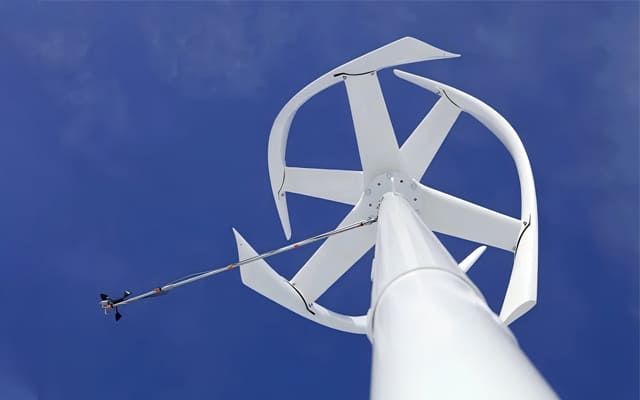As renewable energy technologies continue to advance, Vertical Axis Wind Turbines (VAWTs) are becoming increasingly popular in urban areas, remote regions, and off-grid systems. Among these turbines, the generator type plays a crucial role in overall system performance. Core and coreless generators are the two main categories, each with distinct operating principles, efficiency profiles, and structural advantages.
1. Core Generators: Efficient and Stable, Ideal for High-Power Applications
Core generators follow a traditional design, where the stator coils are wound around a laminated silicon steel core. As the rotor spins with the wind, its permanent magnets generate a magnetic field that passes through the core and induces current in the stator coils.
Key Advantages:
-
High magnetic flux density enhances power generation efficiency
-
High output capacity, suitable for medium to large-scale wind systems
-
Mature technology with relatively low manufacturing cost
-
Designed for continuous operation under heavy loads
Disadvantages:
-
Heavier structure and higher startup wind speed
-
Subject to core losses such as eddy currents and hysteresis
-
May generate more noise and vibration during operation
2. Coreless Generators: Lightweight and Silent, Ideal for Low Wind and Urban Applications
Coreless generators—also known as hollow shaft or axial flux generators—eliminate the traditional iron core structure. Instead, only the stator windings are retained and fixed using high-strength materials. This design reduces magnetic resistance and allows the generator to operate efficiently in low wind conditions.
Key Advantages:
-
Ultra-low startup wind speed, ideal for low-wind regions
-
No cogging torque, resulting in smooth and silent operation
-
Compact and lightweight, easy to install on rooftops or portable devices
-
Minimal iron losses, offering stable long-term efficiency
Disadvantages:
-
Lower power output per unit
-
More complex and costly manufacturing process
-
Best suited for small-scale, distributed energy systems
3. Latest Technology Trends and Case Studies
1. Rise of Disc-Type Coreless Generators
Recent innovations have led to increased interest in disc-type coreless generators, especially in micro-wind power applications. These generators feature reduced rotor inertia and no magnetic resistance between the magnets and core, allowing them to start generating power at wind speeds as low as 1–1.5 m/s. Their efficiency surpasses conventional models by 20% to 35%.
(Source: mag.big-bit.com)
2. Adoption of Multi-Phase Systems
To improve output power and voltage stability, engineers are experimenting with five-phase systems in axial flux coreless permanent magnet generators. Simulation results show that five-phase configurations significantly reduce voltage ripple, improve rectification, and enhance overall performance.
(Source: researchgate.net)
3. Environmental Sustainability
Coreless permanent magnet generators are also more environmentally friendly. They require no lubricants or cooling fluids, thus avoiding potential pollution. Furthermore, their compatibility with multiple renewable energy sources—such as wind, hydro, and solar—helps reduce carbon emissions.
(Source: galaxywindturbine.com)
4. Comparative Overview
| Feature | Core Generator | Coreless Generator |
|---|---|---|
| Magnetic Induction | High | Moderate |
| Startup Wind Speed | Relatively High | Low (ideal for micro-wind) |
| Operating Noise | Slightly Higher | Ultra-Low |
| Structural Weight | Heavier | Lighter |
| Application Scenarios | Wind farms, industrial use | Urban rooftops, small wind systems |
| Cost | Lower | Higher |
5. How to Choose the Right Vertical Axis Wind Turbine?
Choosing between a core or coreless generator depends on your specific project needs:
-
If you require high power output and cost-effective energy generation—such as for rural electrification, agricultural irrigation, or commercial wind power systems—a core-type vertical axis wind turbine is highly recommended.
-
If your focus is on lightweight design, silent operation, and low wind speed performance—such as for BIPV (building-integrated photovoltaics), off-grid lighting, or powering signage in urban environments—a coreless small-scale vertical axis wind turbine offers a superior solution.
The generator type directly impacts the performance, reliability, and environmental footprint of your vertical axis wind turbine system. When selecting the right configuration, consider local wind conditions, installation environment, project budget, and specific energy goals. At ELEGE New Energy, we are committed to providing top-quality wind power solutions tailored to your needs—empowering a cleaner, more efficient energy future.

